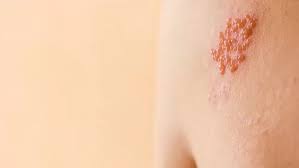We all need sleep, but its exact purpose remains a mystery. Over the past decade, a leading theory has suggested that sleep helps remove waste products and toxins from the brain through a series of tiny channels known as the glymphatic system. According to proponents of this theory, sleep disturbances could impair this process, potentially increasing the risk of Alzheimer’s disease and other brain disorders.
Experiments with mice have supported this idea. However, in recent years, several scientific groups have questioned aspects of the theory. A new study now shows that the mouse brain clears small dye molecules more efficiently when the animal is awake than when it is asleep or under anesthesia. This finding suggests that while the glymphatic system may still function, sleep might actually slow down this cleansing process.
Some researchers are puzzled by these conflicting results and have refrained from commenting publicly to avoid controversy. While some see the new findings as a significant challenge to the sleep clearance theory, others argue that the new study’s methods are too different from previous research to provide a credible challenge. “When you criticize a concept that has been there for some time, then your design should be even better,” says Per Kristian Eide of the University of Oslo.
In the original mouse experiments, neuroscientist Maiken Nedergaard and her team at the University of Rochester injected a dye into the cisterna magna, a fluid-filled pocket at the back of the neck that supplies the brain with cerebrospinal fluid (CSF). Using a two-photon microscope, they measured the dye’s influx into the brain and its distribution. They found that the dye influx increased when mice were asleep or under anesthesia, leading them to conclude that more fluid was flowing through the brain, draining into blood or lymphatic vessels. Nedergaard proposed that this efflux relied on fluid being pumped through tiny glymphatic vessels between neurons, identified in her earlier research.
Nicholas Franks, an anesthesia researcher at Imperial College London and the senior author of the new study, did not initially set out to disprove this popular hypothesis. “I really liked this sort of theory of sleep,” he says, “as a basic housekeeping mechanism that keeps the brain healthy and fully functional.” However, he questioned whether dye influx was a reliable proxy for efflux, which he argued would be impossible to measure directly by tracking every blood or lymphatic vessel or potential exit point from the brain.
Franks compares the brain to a leaky bucket, where the water level represents the amount of dye that enters it. The level will rise if the brain pulls more CSF in during sleep, but it will also rise if the efflux slows down, making it hard to differentiate between the two.
Franks’s team used a different technique to infer flow. They injected dye directly into the brains of mice through portals in their skulls and measured its concentration with a sensor located elsewhere in the brain. The sensor detected much less dye when the mice were awake compared to when they were asleep or anesthetized, suggesting that the molecules were leaving the brain more quickly when the mice were awake. This study was published on May 13 in Nature Neuroscience.
“I think they did a very good job,” says Erik Bakker, a circulation expert at Amsterdam University Medical Center. Biologist Stephen Proulx at the University of California, Santa Barbara, calls the new study’s approach “very clever.”
Proulx observed a similar phenomenon in 2018 when his team injected tracer dyes into the cisterna magna and found that they entered the systemic blood more quickly in awake mice than in anesthetized ones.
However, Nedergaard argues that the new study does not seriously challenge her findings. “You can’t just come in and do something that’s completely different and say all the old data is wrong,” she says. “I’m actually shocked that this paper was published.” Nedergaard is preparing a letter to Nature Neuroscience outlining her concerns, including that the dye was injected at the same rate during wakefulness and sleep, which she believes could lead to misleading results. Her research has found that neurons shrink during sleep—a claim that others have contested—which could reduce brain pressure and affect dye flow.
Her main concern, shared by others, is that inserting the dye portal might have damaged the brain. The glymphatic system is delicate and could easily be disrupted. (Franks’s team waited a week after surgery before injecting the dye to allow potential injuries to heal.) Eide also notes that the team did not measure dye in the cortex, where most glymphatic clearance occurs.
Bakker suggests that the brain might have multiple waste-clearing mechanisms. Small molecules like dyes might exit the brain differently from larger ones, such as the Alzheimer’s-linked protein beta-amyloid.
Nedergaard’s team is working on a rodent model that produces traceable waste products as they leave the brain. Meanwhile, Franks’s team plans to study how different-sized molecules behave in the brain and the mechanisms that might pump waste-bearing fluid through the brain.
Challenging a widely accepted theory about something as fundamental as sleep is difficult, Franks says. “It’s got such a firm rooting in the zeitgeist.”












